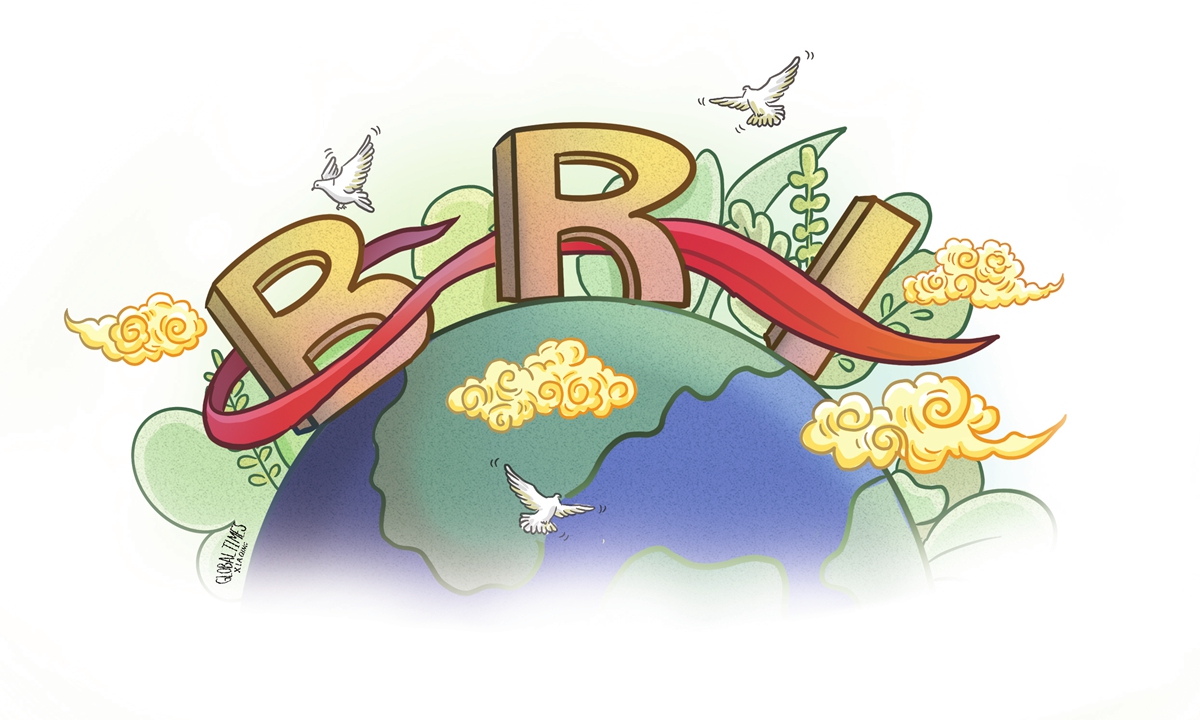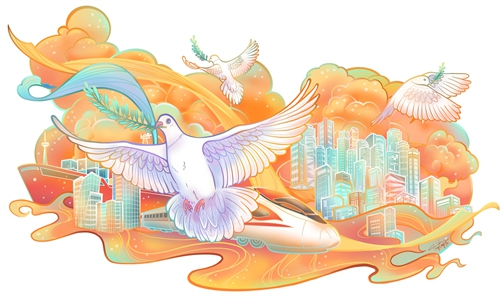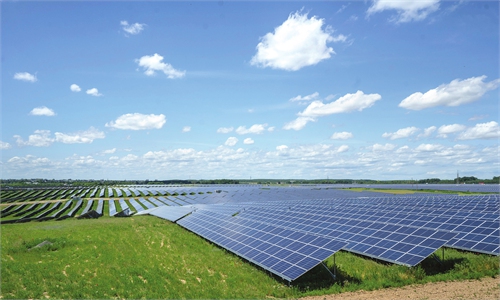
Illustration:Xia Qing/GT
Celebrating its 10th anniversary, the Belt and Road Initiative (BRI) has become the greatest global movement of sustainable development since its launch in 2013 by President Xi Jinping. It has redefined the concepts of development and modernization while connecting and transforming the northern and southern hemispheres.Continents such as Africa and parts of Asia that once were described at the beginning of the 21st century as dark and hopeless by the Western-led partners are now considered hopeful and rising, enjoying world-class sustainable infrastructure projects under the Belt and Road cooperation.
Anchored on the pillars of policy coordination, infrastructure connectivity, people-to-people exchanges, financial cooperation and trade promotion, the BRI in nature is emancipating rather than enslaving or perpetuating neo-colonialism policies. Its impact across the world is visible, positive and transformative.
Putting this into context, the BRI is not just about infrastructure development. It is about bringing civilizations together to find solutions for the challenges affecting the universe such as poverty, unemployment, diseases, conflicts and climate change, amongst others.
Thus, knowing that unity among civilizations is the key to sustainable development, the Belt and Road through its five pillars has underscored the following opportunities for common and shared prosperity.
First, while promoting high-quality cooperation, the Belt and Road initiative as a global public good from China to the world has fostered the power of partnerships. Currently, China has signed cooperation documents with more than 150 countries and over 30 international organizations. More than 20 UN agencies, funds, and programs such as UNIDO and UNEP among others have all signed cooperation documents on the BRI. The cooperation documents which vary in size and scope all aim at improving the lives of the global citizenry. Furthermore, partnerships, as well as local, regional and global think tanks, non-governmental organizations, and Institutions of higher learning have also been incorporated into the BRI. This has helped to strengthen the dialogue base of the initiative by fostering technical support and capacity building.
Second, the BRI has advanced true multilateralism, designed to allow developed and developing countries to enjoy high-quality BRI cooperation. This shows that China-led public goods are anchored on the ethos of shared prosperity and equal participation. Any country or civilization that wishes to participate in the BRI is welcome.
Third, the BRI has aligned well with national, continental and global strategies such as Kenya and Ethiopia's Vision 2030, the African Union Agenda 2063, and the United Nations 2030 Agenda for Sustainable Development, among others. This means the BRI respects the power of partnership and doesn't impose its preferred projects on others. These counter the narratives of neo-colonialism, propagated by developed partners who thrive in imposing or advancing contradictory policies and values on others before undertaking any development programs. This has enabled the BRI to undertake more than 3,000 cooperation projects and galvanized nearly $1 trillion dollars of investment.
Fourth, the BRI is advancing the integration and development of communities and regions. Undertaking projects that open up different corridors such as road expansions, and railway and port constructions have empowered peoples and united civilizations. As observed by the World Bank, the BRI if fully implemented, and is expected to increase global real income by 0.7 percent to 2.9 percent, lifting 7.6 million people from extreme poverty and 32 million people from moderate poverty by 2030. This is the true definition of the power of partnerships aimed at improving the living standards of everyone irrespective of their origin.
Fifth, the BRI has the ability to form partnerships on changing global trends. At the peak of the COVID-19 pandemic, the BRI automatically promoted the Health Silk Road and ensured that developing countries also get their rightful share of vaccines after some developing nations began engaging in vaccine nationalism. China, as a true partner, provided over 1.8 billion doses of vaccines to more than 120 countries and international organizations.
Last but not least, BRI partners are working closely to advance the implementation of the principles of ecological civilization of reconciling development and nature. Currently, China has signed over 50 cooperation documents on ecological environmental protection with relevant partners under the Belt and Road cooperation. Moreover, the Ministry of Ecology and Environment of China has provided capacity-building training programs to nearly 3,000 students from developing countries through the Belt and Road South-South Cooperation Initiative on Climate Change.
A decade of the BRI, the most ambitious initiative the world has ever seen, with its power to foster partnerships, has empowered people, transformed civilizations, connected regions and continents, and injected new vitality into the global development system.
The author is the Executive Director of the China-Africa Center at the Africa Policy Institute. opinion@globaltimes.com.cn


